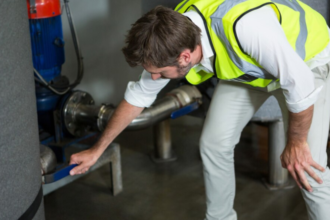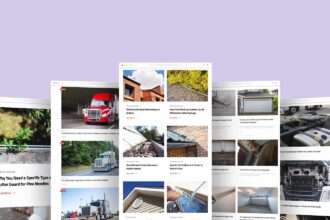Ever wonder how your favorite ice cream stays frozen from the factory to your freezer? Or how a life-saving vaccine makes it safely from the lab to a clinic across the country? That’s all thanks to commercial refrigeration and its vital role in cold chain logistics.
Cold chain logistics is a temperature-controlled supply chain that helps move perishable products without losing their quality or safety. From warehouses and transport trucks to your local grocery store, commercial refrigeration keeps things cold every step of the way.
What Is Cold Chain Logistics?
Understanding the Temperature-Controlled Supply Chain
Cold chain logistics is the process of storing and transporting temperature-sensitive products. It involves a series of steps that keep goods within a specific temperature range, from production to final delivery.
This system is essential for industries like:
- Pharmaceuticals (vaccines, insulin): Medicines and vaccines must be kept at strict temperatures to stay effective and safe. Without proper refrigeration, their potency can degrade quickly.
- Food and beverage (seafood, dairy, frozen meals): Perishable foods need consistent cold storage to prevent spoilage and maintain their taste, texture, and safety for consumers.
- Agriculture (fresh produce): Fruits and vegetables are highly sensitive to temperature shifts. Cold chains help extend shelf life and reduce spoilage before reaching stores.
The Role of Commercial Refrigeration in the Cold Chain
What Is Commercial Refrigeration?
Commercial refrigeration includes large-scale cooling systems used in businesses to store perishable goods.
You’ll find commercial refrigeration in:
- Warehouses: These facilities use powerful refrigeration units to store bulk goods before they are distributed. Walk-in freezers and coolers are common here.
- Distribution centers: Items are sorted, staged, and held temporarily in refrigerated areas before being loaded onto trucks or planes for delivery.
- Restaurants: Commercial kitchens depend on walk-in refrigerators and freezers to keep ingredients fresh and meet health codes.
Stage 1: Warehousing and Pre-Distribution Storage
First Stop: Keeping Products Safe Before They Move
The journey of a cold chain product often begins in a refrigerated warehouse. Here, goods are kept at the right temperature right after production.
For example:
- Fresh produce from farms is chilled to slow spoilage and prevent ripening before it reaches consumers. This helps extend shelf life and maintain quality.
- Frozen seafood is kept below zero until it’s shipped out. This preserves texture and prevents bacterial growth during transit.
Stage 2: Transport Staging and Distribution Centers
Chilled Transitions: Temporary Holding and Cross-Docking
Before hitting the road, products are staged in distribution centers or transport hubs. These facilities use commercial refrigeration to hold goods while they’re sorted and prepared for delivery.
For instance:
- A batch of dairy products from one farm may be combined with others for supermarket delivery, requiring temporary cold storage to maintain freshness.
- Frozen meals might be moved between trailers headed to different regions, with cross-docking used to minimize delay and storage time.
Stage 3: Point-of-Sale or End-User Storage
The Final Chill: Where Customers Access the Goods
The final stage in the cold chain is storage at the end location—be it a grocery store, restaurant, pharmacy, or lab.
Examples include:
- Display freezers in supermarkets: These units not only keep food frozen but also present items attractively for shoppers while maintaining safety.
- Vaccine refrigerators in clinics: Special medical-grade units ensure consistent temperatures and secure storage to preserve effectiveness.
Products That Depend on Cold Chain Logistics
Not All Goods Can Handle the Heat
Many items need temperature control to stay usable. Here are some examples:
- Biological samples Require strict temperature protocols. Any deviation can contaminate or invalidate the samples, risking research and diagnoses.
- Frozen foods: Require temps below -18°C to maintain texture and prevent bacterial growth. Even short exposure to higher temps can cause spoilage.
- Fresh seafood: Must stay just above freezing to remain safe. Warmth can rapidly lead to decomposition and unpleasant odors.
How Temperature Control Prevents Spoilage and Waste
Cold = Controlled Quality
One of the main reasons why products deteriorate while in transportation is temperature changes. Only a couple of degrees may
- Kill live cultures in yogurt: These beneficial bacteria need stable temperatures to survive and provide their health benefits.
- Weakened vaccines: Even brief warming or freezing can render vaccines useless, wasting valuable resources and risking public health.
The Future of Commercial Refrigeration in Cold Chains
Tech That’s Changing the Game
Innovation is making commercial refrigeration even more efficient. Some trends to watch:
- IoT monitoring for real-time data and alerts: Smart sensors help track and report temperature changes instantly, allowing for quick intervention when needed.
- Energy-efficient systems to lower costs and carbon footprints: New designs reduce energy consumption while maintaining performance, helping businesses save money and protect the planet.
- Solar-powered refrigeration for off-grid locations: This is especially valuable in developing regions where access to reliable electricity may be limited.
Conclusion
From preserving life-saving vaccines to delivering your favorite frozen pizza, commercial refrigeration is the backbone of cold chain logistics. It ensures perishable goods stay safe, fresh, and effective throughout their journey. Whether in warehouses, transport hubs, or local stores, refrigeration keeps the cold chain unbroken, protecting products, reducing waste, and helping industries thrive.
FAQs
- What’s the difference between commercial and residential refrigeration?
Commercial refrigeration is designed for businesses. It handles larger volumes, has faster cooling speeds, and operates more reliably than home fridges. - Why is temperature control so important in the cold chain?
Even small temperature changes can spoil food, ruin medicines, or cause dangerous bacteria to grow. Maintaining consistent cold is key to safety. - What industries use cold chain logistics the most?
Industries like pharmaceuticals, food and beverage, biotech, and floral delivery rely heavily on cold chain logistics for safe and timely delivery. - How do companies monitor refrigeration systems during transport and storage?
Many use IoT-based tech, GPS trackers, and cloud platforms that give real-time alerts if temperatures go out of range, helping prevent losses.

















